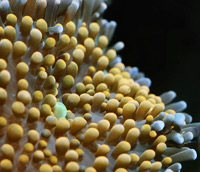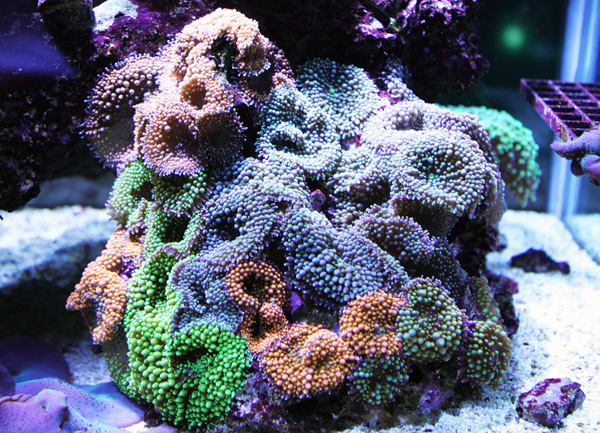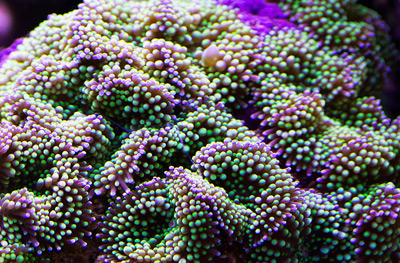As an American reefkeeper, it’s all too easy for me to forget that some truly gorgeous invertebrate livestock originates relatively close to home in the tropical western Atlantic and Caribbean. I was reminded of this recently when CC entrusted several of his Caribbean specimens to my care in advance of his pending move to the great state of Florida.
By the way, if you “felt a great disturbance in the force” some weeks back, it had nothing to do with the destruction of Alderaan. More likely, it was just Chris’s head exploding at the thought of his prized Caribbean species intermingling with my lowly Indo-Pacific corals and fish. Did I ever mention that CC is a terrible “species-ist”?
Anyway, among this adopted assortment are several color varieties of Ricordea florida. Now, prior to receiving these specimens, it had been a long time since I’d given much thought to rics, and I’d forgotten how truly stunning these humble corallimorphs can be, so it was really nice to get reacquainted with them. They’re also fairly rugged, so whether you’re a beginner, intermediate, or advanced hobbyist, R. florida can be a good choice for your system.
Physical traits

R. florida has a roundish oral disc that’s covered with warty protuberances. These bumps can be somewhat more elongated at the margins of the disc. Coloration is highly variable. Not only does Ricordea occur in a rainbow of colors—including various hues of green, blue, red, yellow, orange, pink, brown, and others—but individual polyps can also sport several different colors at once. Maximum polyp size is around 1.5 to 2 inches in diameter.
Lighting and current
Illumination should be on the moderate side. Ricordea can thrive under brighter lighting than most ‘shrooms can, but if you have higher-intensity lamps you’ll need to be discriminating in their placement. For example, if your tank is lit with metal halides, it might be best to position them lower in the tank and out of the direct glare of the lamps. Another good option is to attach them to the rockwork in a vertical orientation.
As far as water movement is concerned, keep it gentle to moderate. Excessive current may cause polyps to detach and drift around the tank in search of more suitable placement. While drifting, they’re vulnerable to “death by powerhead.”
Feeding
R. florida derives much of the nutrition it needs from the photosynthetic zooxanthellae residing in its tissues. However, you can experiment with feeding various meaty items or even pellets as well.

Compatibility
Ricordea doesn’t pack a particularly potent sting, but it can damage—or be damaged by—other corals with which it comes into direct contact, so be sure to allow proper spacing between specimens. They’ll get along just fine clustered with their own kind, however.
An Indo-Pacific cousin
By the way, assuming you don’t have an irrational hatred of all livestock originating outside the Caribbean as Chris does, there’s also an Indo-Pacific Ricordea species—R. yuma—that appears in the marine aquarium trade. I’ve never kept this species of ric, but reportedly it’s a bit more challenging to keep than R. florida.
If you have insights on either species that I haven’t touched upon here, please let us know in the comment section below.



